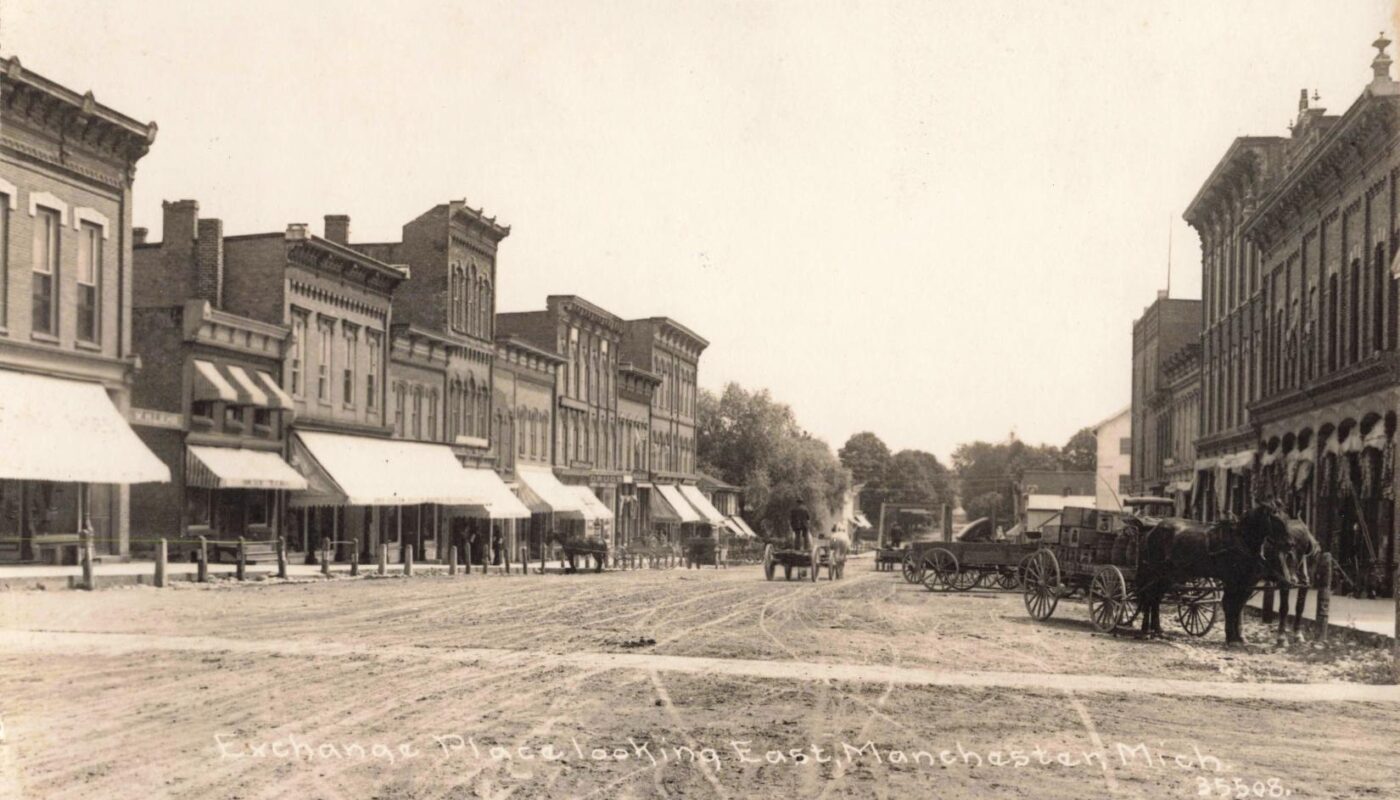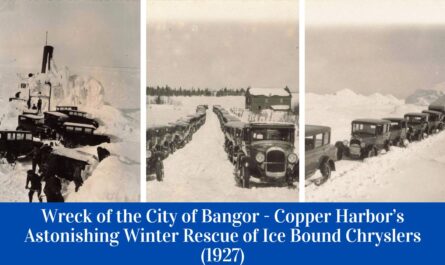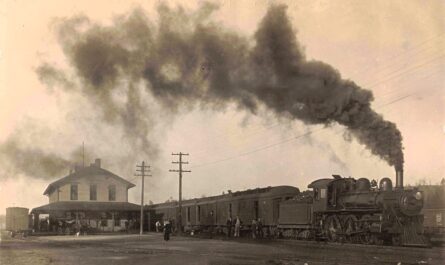This Michigan Moments episode explores the history of Manchester Michigan, focusing on its commercial center, the River Raisin’s industrial role, the Ford hydroelectric plant, and the community’s landmarks. Through rare photographs, viewers can see how this Washtenaw County town balanced tradition and progress in the early 1900s.
Video – Manchester Michigan’s Past Was Anything but Sleepy
From horse-drawn wagons on Exchange Place to the hum of the Ford hydro plant, Manchester’s history runs with the River Raisin.
A River Town at the Crossroads of Change

The history of Manchester, Michigan is closely tied to the River Raisin. In the early 20th century, this Washtenaw County community blended its agricultural roots with a growing industrial presence. The river not only powered mills but became the foundation for new ventures that linked Manchester to broader markets and modern technology.
Exchange Place – The Commercial Heart

Exchange Place was Manchester’s center of commerce. Photographs from the early 1900s show rows of brick buildings with canvas awnings shading shopfronts. Farmers tied up their horses and wagons while they bought supplies, conducted business, and caught up on local news. Stores offered everything from dry goods to banking services, and law offices shared space above street-level shops. The scene reflected a rural community with strong economic ties to the surrounding farmland.
The River Raisin and Industrial Growth
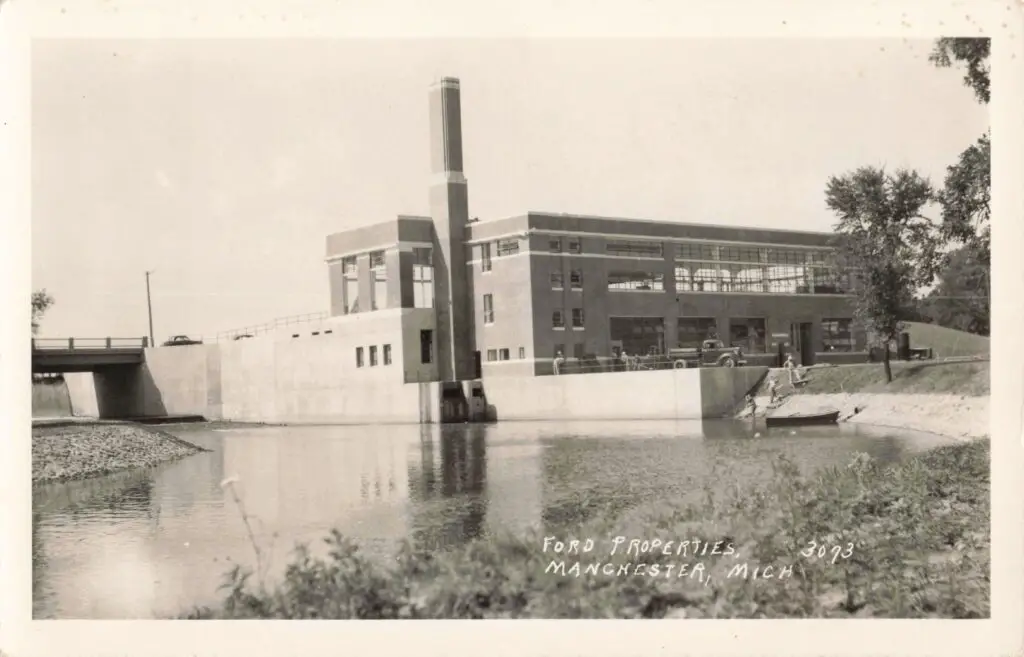
The River Raisin’s steady current had long turned the wheels of Manchester’s mills. By the early 20th century, its potential was harnessed for electricity. Starting in 1919, Henry Ford ordered an exploration of sites that could be set up for small factories thought Southeast Michigan. One of the most significant developments in the Village Industries Experiments was the Ford Motor Company’s hydroelectric plant. This modern facility replaced older mill systems and provided reliable power to the community. The new plant was a sign of progress and tied Manchester more closely to Michigan’s expanding industrial network.
Railroads and Connection to the Outside World
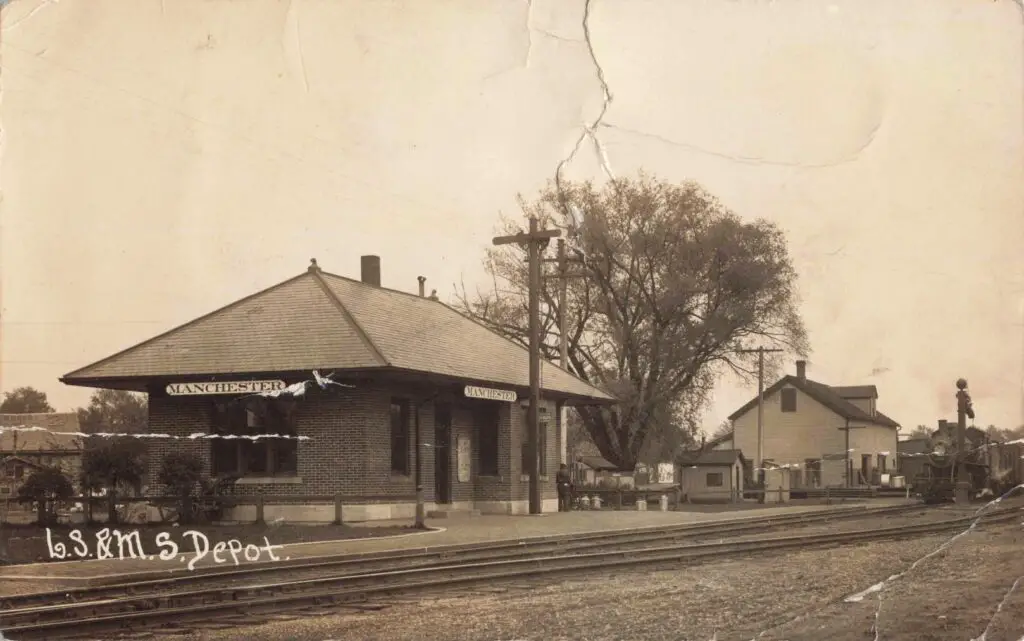
The Lake Shore & Michigan Southern (L.S. & M.S.) Railroad depot played a critical role in Manchester’s economy. Passenger trains brought visitors and residents to and from larger cities, while freight service carried the products of local farms and mills to market. In winter, the town’s ice harvest became an important seasonal industry. Large blocks of ice cut from the frozen River Raisin were loaded into insulated railcars, providing refrigeration for urban customers months after the thaw.
Hotels, Churches, and Community Landmarks
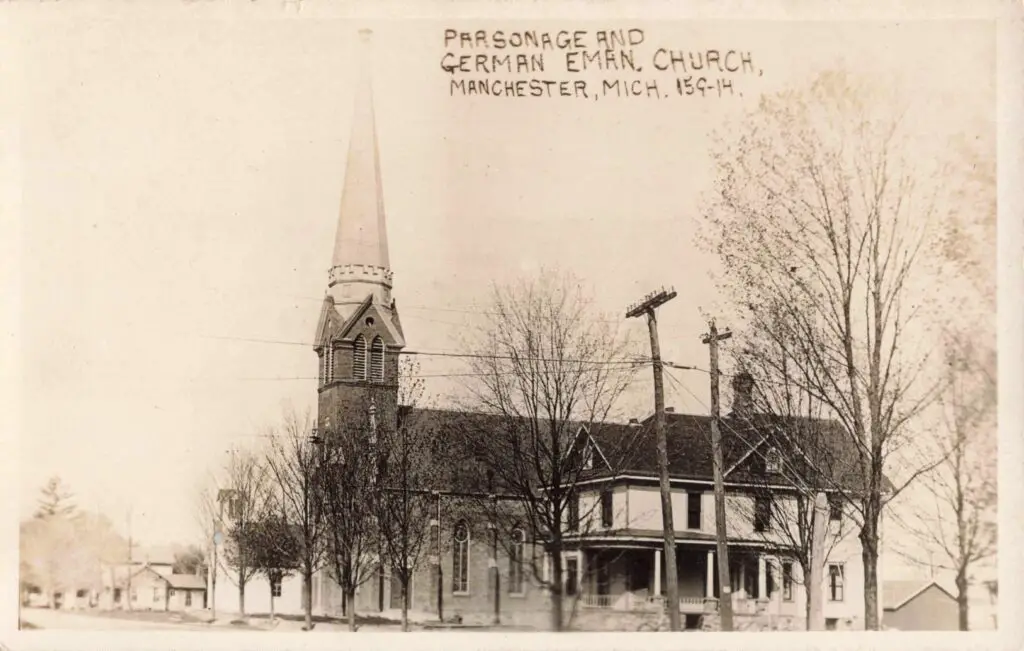
Manchester was more than an industrial and commercial hub; it was a close-knit community with social and cultural gathering places. The German Evangelical Church stood as a visual and spiritual landmark, its tall spire visible from the countryside. The Hotel Green offered accommodations for travelers, complete with modern comforts such as steam heat. These institutions anchored community life and gave the town a sense of identity.
Electric Power and Modernization
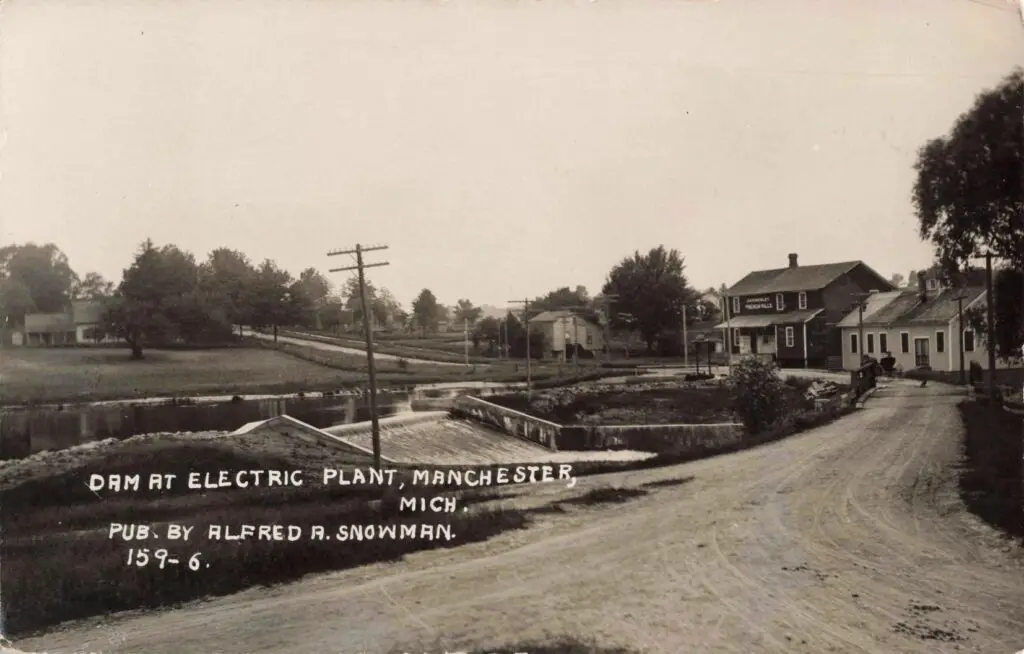
Alongside the traditional mills, the arrival of electric power changed the pace and possibilities of life in Manchester. Street lighting, electric pumps, and powered machinery replaced older methods, improving productivity and safety. The Ford hydroelectric plant became both a workplace and a source of pride for the town.
Scenes Along the River Raisin
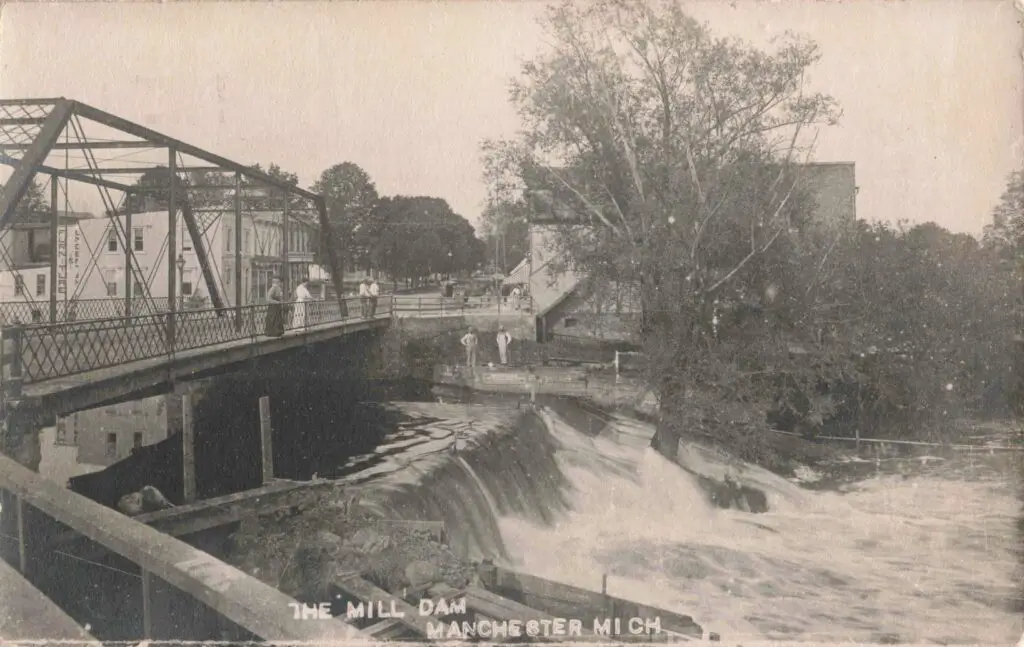
Beyond its industrial uses, the River Raisin shaped the daily experiences of Manchester residents. In warm months, it was a place for fishing and boating. In winter, it became a frozen worksite during the ice harvest. Its winding course through the town connected neighborhoods and industries alike, making it the backbone of local life.
Why The History of Manchester Michigan Matters

The history of Manchester, Michigan offers a clear example of how small towns adapted to the sweeping changes of the early 20th century. The town kept its agricultural base while embracing new industries and infrastructure. The River Raisin remained a constant thread, tying together the mills, dam, depot, and businesses that defined the community.
Preserving Manchester’s Past
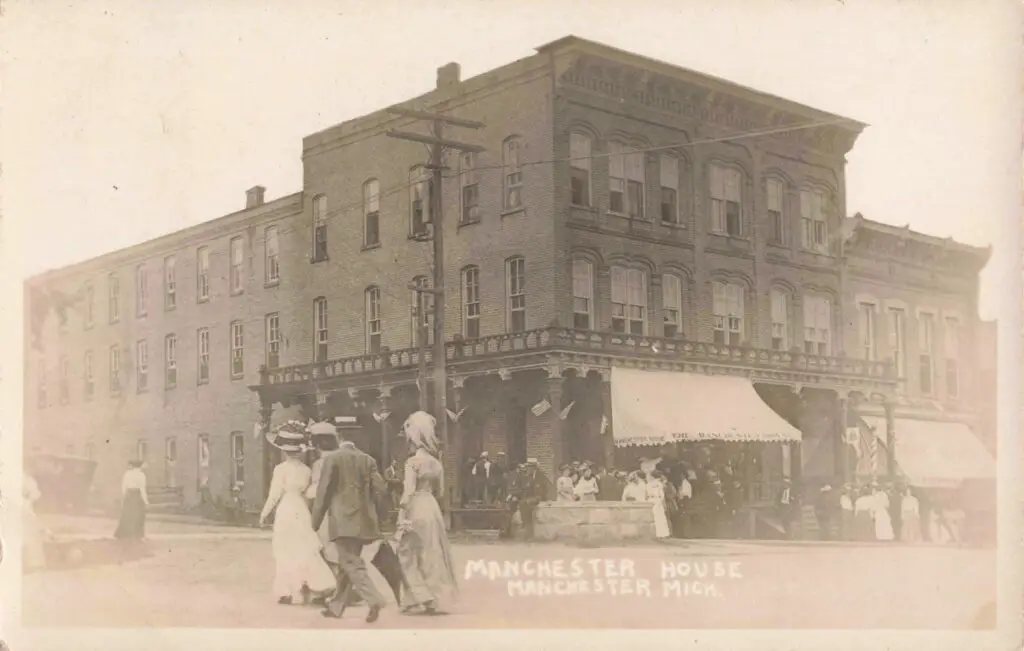
Today, vintage photographs offer a rare view into the Manchester of a century ago. They show more than buildings and machinery—they capture the people, work, and places that shaped the town’s identity. Studying the history of Manchester, Michigan helps keep that story alive and connects present-day residents to the efforts of those who came before.
